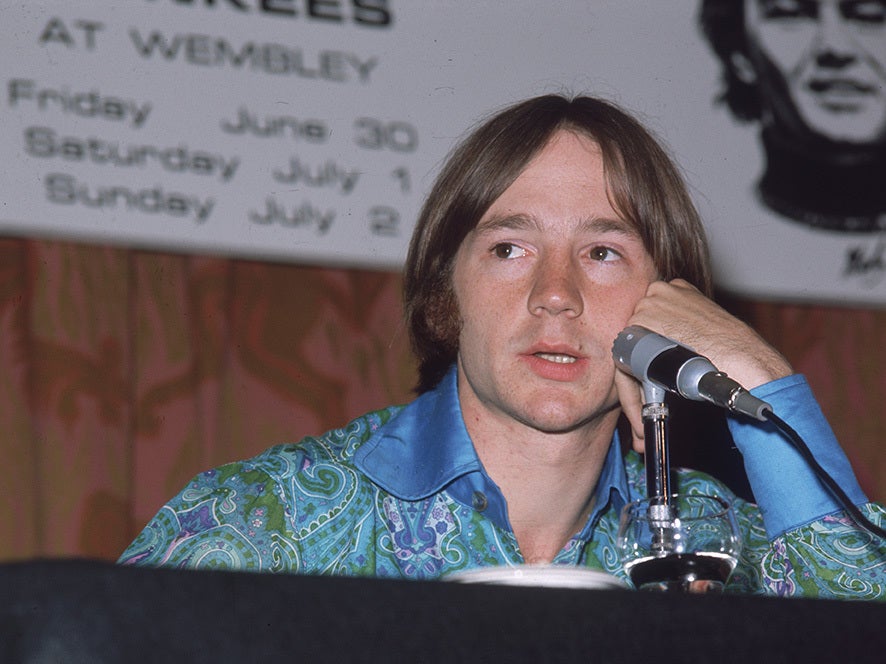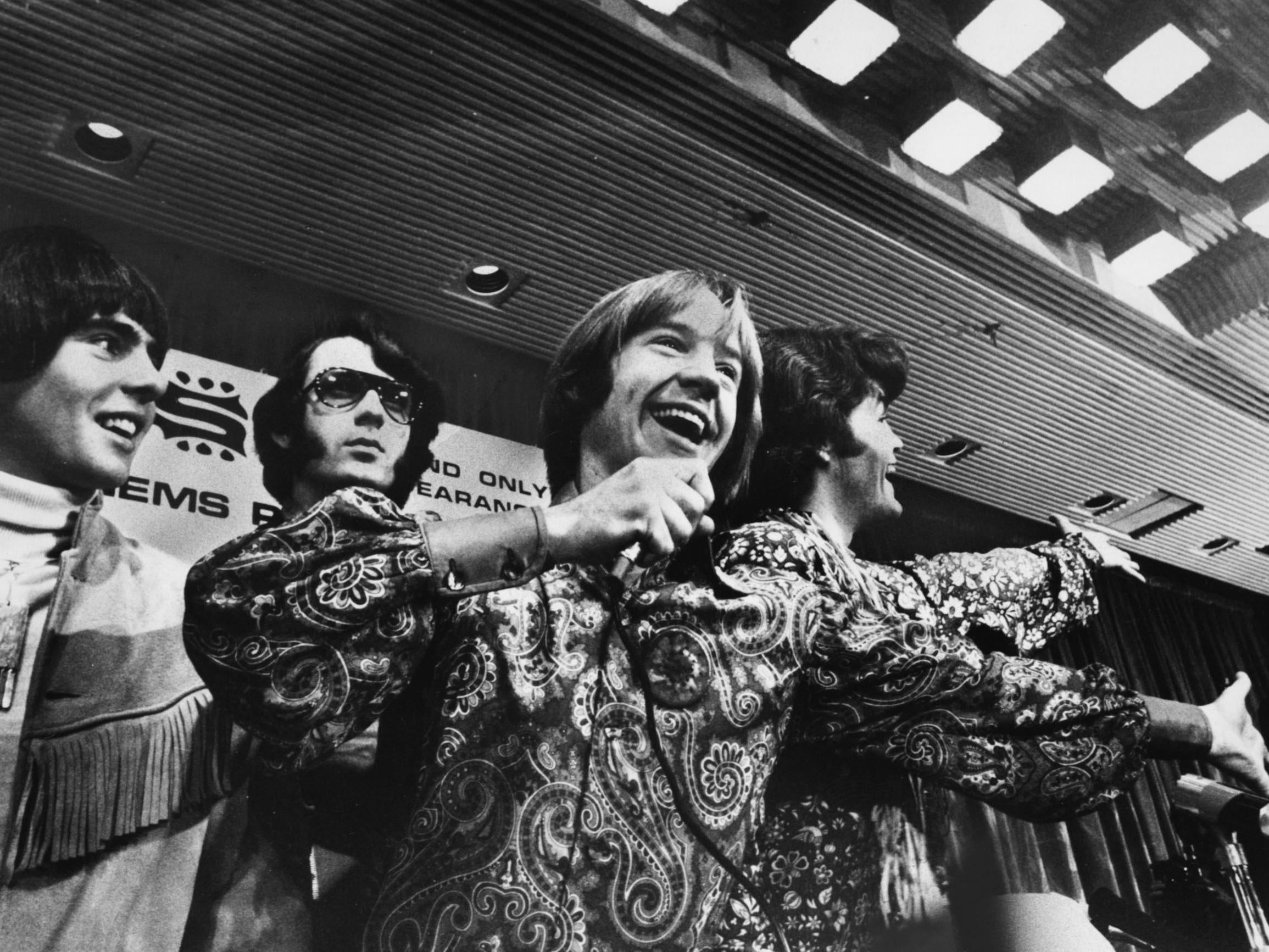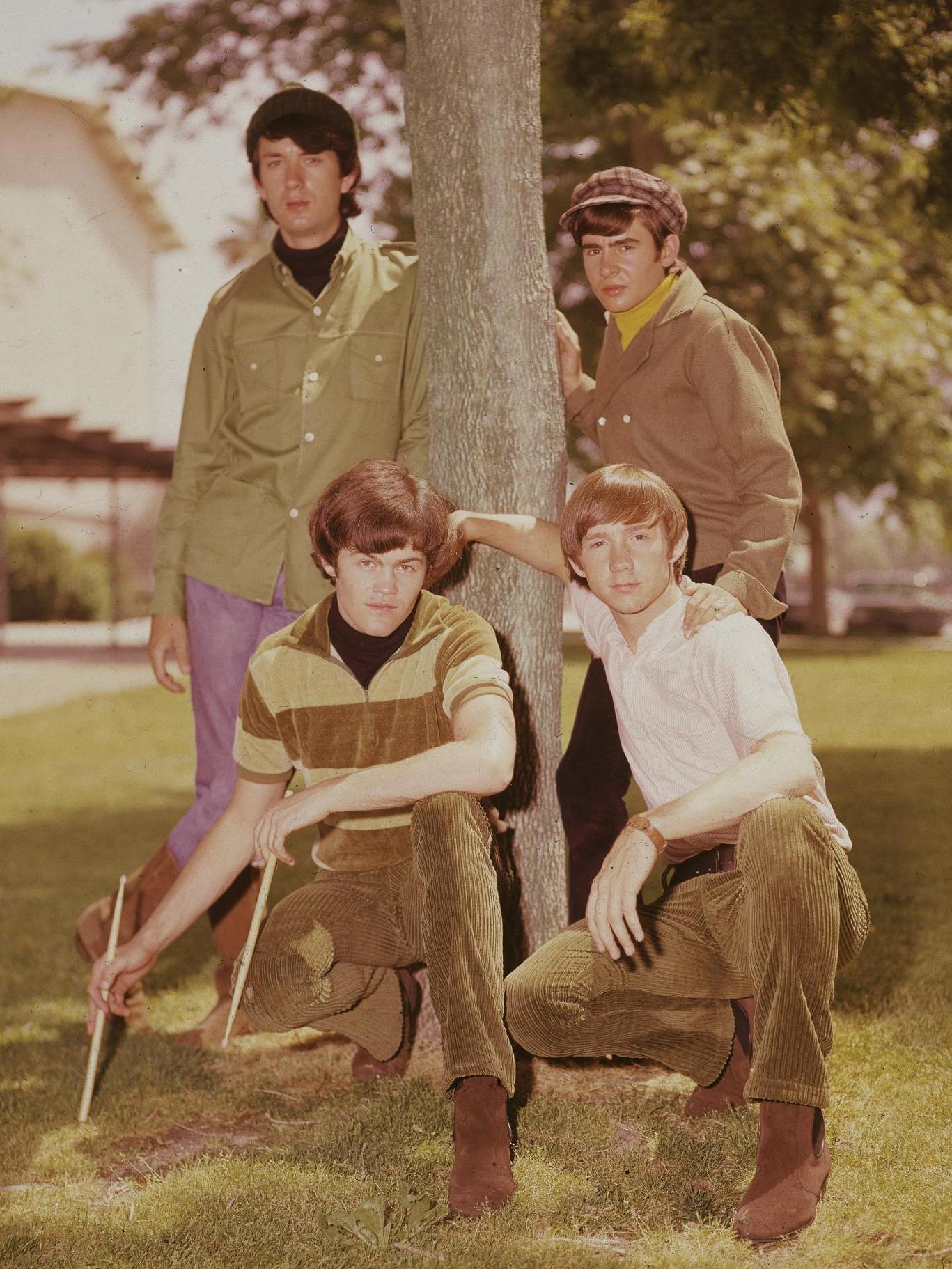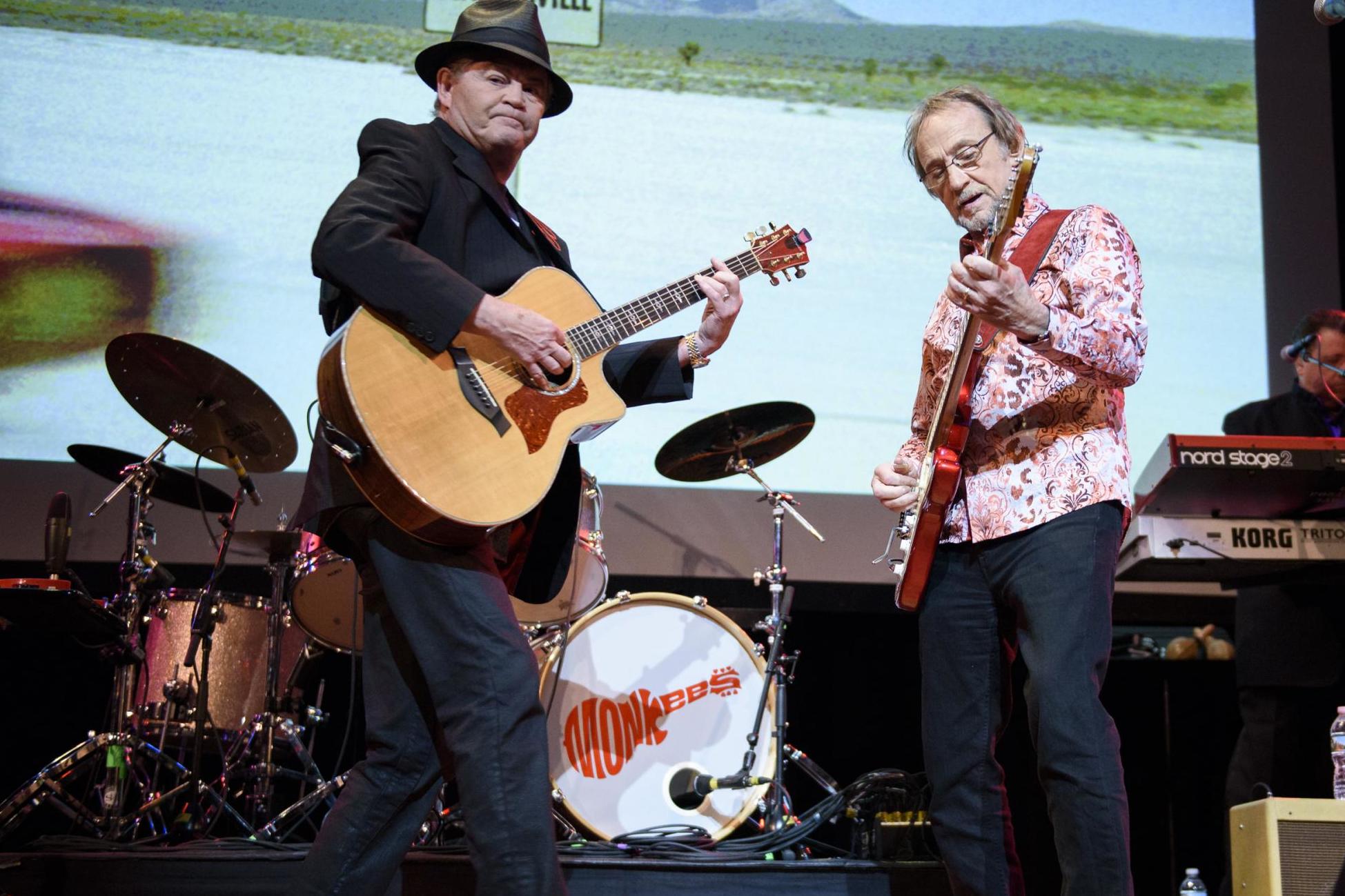Peter Tork: Folk musician who found international fame after being cast in ‘The Monkees’
A dishwasher in 1965, the Peter Seeger and Joan Baez fan was propelled into the mainstream after spotting an advert for an audition

The Monkees began life in 1966 as a pop group manufactured for American television and struggled for years to shake off the reputation of being unable to play their instruments.
In the case of Peter Tork, who has died of cancer aged 77, this was a misconception of almost bizarre proportions.
Tork was a multi-instrumentalist, de facto bass guitarist in a quartet comprising Michael Nesmith, who was also primarily a musician, and Davy Jones and Micky Dolenz, who were actors first and foremost.
The oldest member – he was 24 when the series launched in 1966 – Tork was also a proficient player of the banjo, harpsichord and piano, on which he performed the memorable intro to their 1967 single “Daydream Believer”, a top-five UK hit and a No 1 in the US. Six of their first seven releases became best-sellers in America.
But the production company behind the The Monkees, as the show was called, regarded Tork as an actor who was hired to play the part of the bassist.
The group were prevented by their record company from performing on their first two albums, which topped the charts on both sides of the Atlantic.
The music was played by Los Angeles session men. The intelligent, urbane Tork, cast in the sitcom as “dumb-but-likeable” (Nesmith’s description), became frustrated by the discrepancy between his musical aspirations and his made-for-TV incarnation.
Tork was born in Washington DC to John Thorkelson, an economics professor of Norwegian descent, and his wife Virginia, who had Irish and German ancestry. He grew up as a devotee of folk music, revering the left-wing singer Pete Seeger. In 1962 he forsook his college course in Northfield, Minnesota for Greenwich Village, the New York City neighbourhood where Bob Dylan, Joan Baez and others had begun to make Seeger’s generation appear dated.
In 1965 he moved to LA, washing dishes on Sunset Strip, where he saw an advert in the Hollywood Reporter that read: “Madness! Auditions. Folk ‘n’ Roll Musicians for Acting Roles in new TV series. Running parts for 4 insane boys, age 17-21.” Despite being “too old”, he got the job in a show clearly modelled on the wacky, madcap side of The Beatles, as seen in A Hard Day’s Night and Help! The original mop-tops were veering into psychedelia, ostensibly leaving a gap in the market.

The irony, given that they were not recruited for their musicianship, is that The Monkees reeled off a succession of hit songs that have stood the test of time. “Look at the songbook!” Tork told the Hollywood Reporter in 2013 in an interview to promote one of their reunion tours. “I can look at it and say, you know, it’s right behind the Beatles and the Stones.”
Among the distinguished songwriters whose material they recorded – helping them to transcend the TV programme – were Neil Diamond (“I’m A Believer” and “A Little Bit Me, A Little Bit You”), Tommy Boyce and Bobby Hart (“Last Train To Clarksville” and “Valleri”), Gerry Goffin and Carole King (“Pleasant Valley Sunday”) and John Stewart (“Daydream Believer”). They also starred in a film, Head, written by Jack Nicholson and the show’s co-creator Bob Rafelson.

Tork’s desire for artistic credibility – although he was not a distinctive vocalist – led him to be first to leave The Monkees. In late 1968 he bought out the remaining four years of his contract for $160,000. Davy Jones, the diminutive Mancunian singer, later said: “Peter didn’t want to be a Marx Brother forever.” Nesmith, who was next to quit, would note that his “brother in arms” was a serious, reflective individual with wide interests, unlike his zany character.
The years between Tork’s exit and the group’s 20th anniversary reunion tour (minus the reluctant Nesmith) saw him teach music, maths, French, history and baseball at high school in Santa Monica, California; serve a three-month prison sentence in Oklahoma for possession of hashish; and form bands such as Release, The Peter Tork Project and Shoe Suede Shoes. In the 1990s he also returned to acting with TV roles in comedy and drama shows.

In 1994 he released a solo album, Stranger Things Have Happened and later collaborated with James Lee Stanley on two albums. Monkees’ tours became more frequent, with Nesmith rejoining Tork and Dolenz after Jones’ death in 2012. They had already put out a new record, Justus, in 1996, to which Tork contributed “I Believe You”, and on 2016’s critically acclaimed, 50th-anniversary album Good Times! he wrote and sang one of the stand-out tracks, “Little Girl”.
Since 2008 he had lived with adenoid cystic carcinoma, a rare cancer of the salivary gland, telling the Washington Post that the diagnosis “hit me like a fist in the chest”. He had surgery to remove a tumour in March 2009 but the cancer returned by June. Tork played on, last appearing in the UK in 2016. He died at his home in Mansfield, Connecticut.
His marriages to Jody Babb, Reine Stewart and Barbara Iannoli ended in divorce. He is survived by his wife Pamela Grapes, whom he married in 2014, and by a daughter (with Stewart), a son (with Iannoli) and a second daughter by an extra-marital relationship. Always the “funny” one in The Monkees, Tork provided a self-deprecating epitaph for himself in an interview during his final years. “To this day,” he said, “I have a secret yen to be a musician.”
Peter Halsten Thorkelson (Peter Tork), musician, singer, songwriter and actor, born 13 February 1942, died 21 February 2019
Join our commenting forum
Join thought-provoking conversations, follow other Independent readers and see their replies
Comments